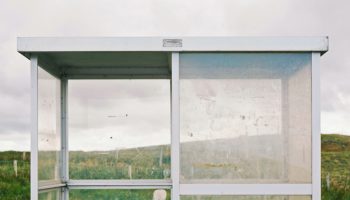Between climate emergency and changing territories, the transport issues are important. The last law on the matter dates from 1982 with the Internal Transport Orientation Act. In 35 years, however, behavioural, technological, political and societal changes have been unprecedented. To face the current challenges, Transport Minister Elisabeth Borne is conveing the LOM Act (Mobility Orientation Law). This new regulation aims to radically transform transport and mobility. Major changes are planned, and they may well renew the daily habits of the public. Focus on 7 points to keep in mind.
LOM Act : the mobility organising authorities
The closer the decision-making centres are to the territories, the more concrete, fast and adapted the strategies put in place can be. To achieve this, the LOM law suggest for the entire French territory to be covered by Mobility Organising Authorities (MOA). They will find their place among communities or regions, and will be used to better coordinate local travels. Until then, only a handful of major cities has this power.
LOM Act : a subsidized and simplified carpooling
Carpooling saves time, money and energy, especially on territories that are poorly covered by the train. To encourage it, local authorities will be able to create grants to encourage carpooling offers. They will also be able to develop and build lanes dedicated to carpooling and the least polluting vehicles on major roads (including highways and peripherals).
LOM Act : a custom-made social support
The purpose of this measure is to support those who most likely have a difficulty to move, such as job seekers, seniors or children. This will allow communities to implement social mobility services and provide individual assistance.
LOM Act : a sustainable mobility package to ease transportation
Most trips are limited to commuting to work. To make them easier, the LOM Act introduce a sustainable mobility package of up to 400 euros per year without taxes, and social contributions to encourage the use of carpooling and bicycles. This package encourages public and private employers to play a part in the financing of transport for their employees.
LOM law : an ambitious bike plan
Cycling concernes 3% of daily trips, while 70% of trips lenth from home to work are less than 5 kilometres. To encourage workers to use bicycles more, a fund of 350 million euros is disbursed to develop cycle routes and take action against theft. This bike plan includes the harmonization and continuity of cycling networks, especially in the most dangerous places for cyclists.
LOM law : The equipment of the charging stations
Electric vehicles are an important environmental alternative, but they can only enhance if charging stations are easily accessible. This is why the new law makes them mandatory in all car parks with more than ten spaces, in new or renovated buildings, as well as in all car parks with more than 20 parking spaces in non-residential buildings by 2025.
LOM law : the low-emission zones
Unsurprisingly, air quality is far from optimal in major cities. From now on, areas with more than 100,000 inhabitants will be able to create low-emission zones, where polluting vehicles will be prohibited (or at least reduced) at certain times. At the moment, 15 territories have committed to create low-emission zones by 2020: Aix Marseille, Clermont-Ferrand, Paris and Greater Paris, Grand Lyon, Grenoble, Montpellier, Nice, Rouen, Saint-Étienne, Strasbourg, Toulon, Toulouse, Fort-de-France and Grand Reims.
The Mobility Orientation Act is a toolkit that aims to change the existing legal framework for transport. This will allow communities to embark on a profound transformation of public policies and new mobility, with a focus on improving everyday transport for all citizens and in all territories. It helps to define the major trends and issues of urban mobility to make tomorrow’s transport a structuring axis that is more practical, more efficient and more environmentally friendly.




